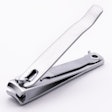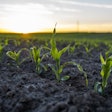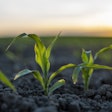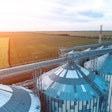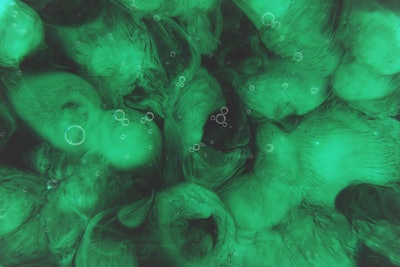
Efstratia Papanikouis aKansas State(MSc) andUniversity of Illinois(PhD) graduate working as a consultant in the interface between plant and animal science: the feed ingredients. She is also a regular contributor to Feed & Grain’s sister brand,Feed Strategy.
When asked what animal feed ingredients might be making headlines in the coming year, Papanikou created a list that includes some very familiar names as well as some novel ones that are worth keeping an eye on.
“My list contains ingredients, such as sorghum and soybeans, that are already being used in a large-scale way,” says Papanikou. “It is just that their perspectives change. For example, with a more arid planet, plants like sorghum will flourish as they need less water to thrive.”
On the other hand, there is a lot of noise about insects, but Papanikou doesn’t see that ingredient becoming mainstream easily.
She notes in the EU,processed animal proteins(PAP), the well-known meat and bone meal which is now allowed in feed, has been the talk of the industry for several years but has taken time to reach the feed mill production stage.
“In the U.S., I know there is a big push for soybean meal usage because ofbiodiesel mandates, so that is something to keep an eye on,” she notes. “Other countries, like Canada, do an excellent job with linseed/flax, but this will always remain a niche ingredient.”
1. Algae
Seaweeds oralgaeis a term that is equivalent to terrestrial plants, so it encompasses thousands of species. Algae’s sustainable qualities help it stand out as a frontrunner in the alternative protein game. As more restaurants, grocery retailers and food brands implement sustainability initiatives across the supply chain, algae-derived ingredients are poised to gain popularity. Production costs, however, are a big challenge for today’s algae producers.
“Macro-algae have the most potential as a sustainable source because (a) they already being produced by the seas, and (b) they need little energy input to become a feedstuff,” says Papanikou.
2. Insects
Insect productionuses locally sourced waste to breed a valuable protein source for humans and animals without requiring fertile land or high volumes of water. Gaining steam due to the environmental and nutritional benefits, the昆虫产业is projected to grow by 27.8% annually and could be worth nearly $8 billion by 2030, according to areport from Meticulous Research. Whether consumers will accept animal foods from animals fed on insects remains a question, says Papanikou. “At the moment,” she says. “This whole business remains at the pilot stage, in most cases, with a few notable exceptions.”
3. Sorghum
With severe droughts hitting the EU and U.S. in 2022, many farmers are considering a future with diminishing water reserves. Whether this harsh drought was a one-off event or something we will be experiencing often remains to be seen. In the meantime, Papanikou says farmers arelooking into sorghumas a resource-saving ingredient. Sorghum is a C4 plant, and as such, it requires ample sunlight, just like corn. But, in contrast with corn, sorghum has better yields in more sandy soils and with little or no irrigation. “We expect animal producers to have a viable alternative in the form of sorghum, worldwide, sooner rather than later,” says Papanikou.
4. Soybean meal
Soybean mealwill see a huge increase in volume due to the decision of the U.S. government to lean heavily onbiodiesel——一个问题不是由动物营养问题. “With a bonanza of cheap soybean meal, we expect to see higher consumption by animals worldwide as this raw material will compete not only on price with synthetic amino acids, but it will bring back to the animal rations complimentary nutrients that are missing in very low-protein diets,” says Papanikou.
5. Linseed/flaxseed
Linseed, also known asflaxseed, is the oilseed crop with the highest content of the omega-3 fatty acid called alpha-linolenic acid. It is also a rich source of protein, dietary fibers, and phytoestrogens. Cultivated linseed varieties contain 45% to 50% oil on a dry-weight basis. Papanikou notes it contains many other underestimated components that can help in gut health, immunity, and many other functions.
“Interestingly, linseed oil is seen with a different eye in ruminant rations compared with other sources of fats and oils based on the latest NRC publication about beef,” she says. “In most cases, we expect an increase in availability of extruded linseed products as raw linseed should not be fed to animals.”
6. Processed animal proteins
This mostly concerns the EU, whereprocessed animal proteins(PAP) have been re-allowed. PAPs are feed ingredients made from Category 3 animal by-products. According to theEuropean Fat Processors and Renderers Association(EFPRA), PAPs are nutritionally rich feed ingredients that help produce healthy animals. PAPs manufactured in Europe are made from animal byproducts that are fit for human consumption.
As well as being safe, they are sustainable because they prevent valuable food going to waste, says Papanikou. “The animal nutrition industry in the EU is still unsure how to take advantage of PAP as knowledge on how to use this raw material has largely ‘retired,’” says Papanikou.

Efstratia Papanikoucan be contacted atepapanikou@ariston-nutrition.com.










